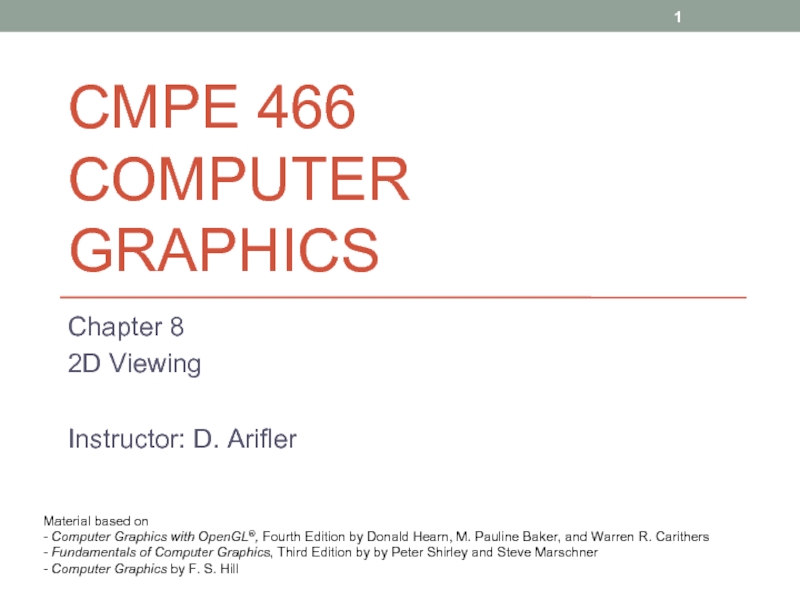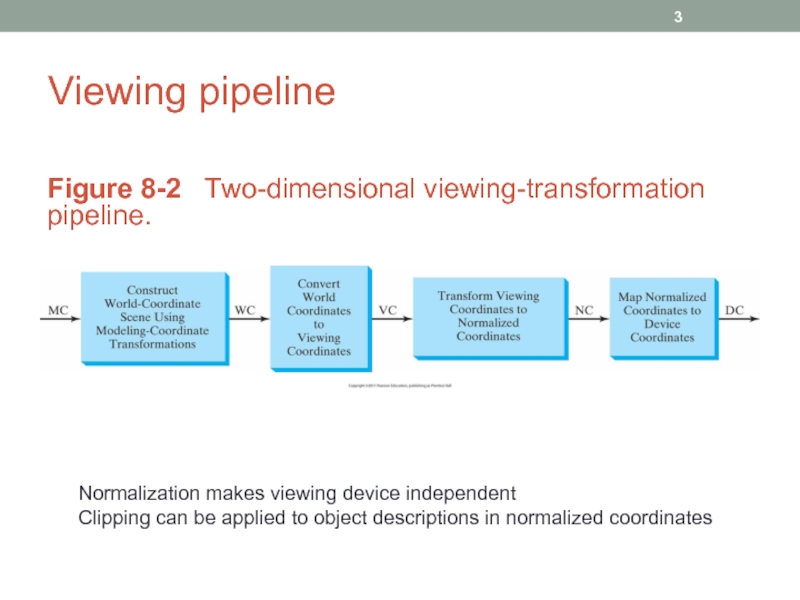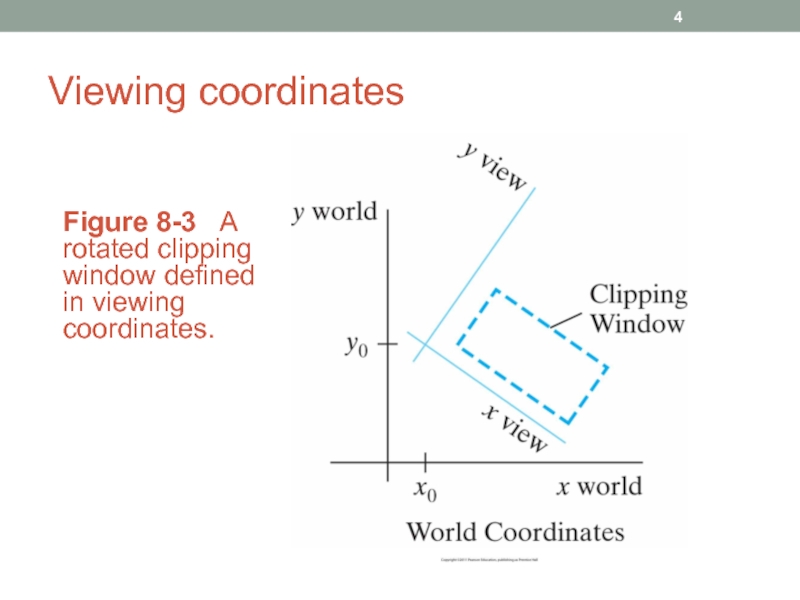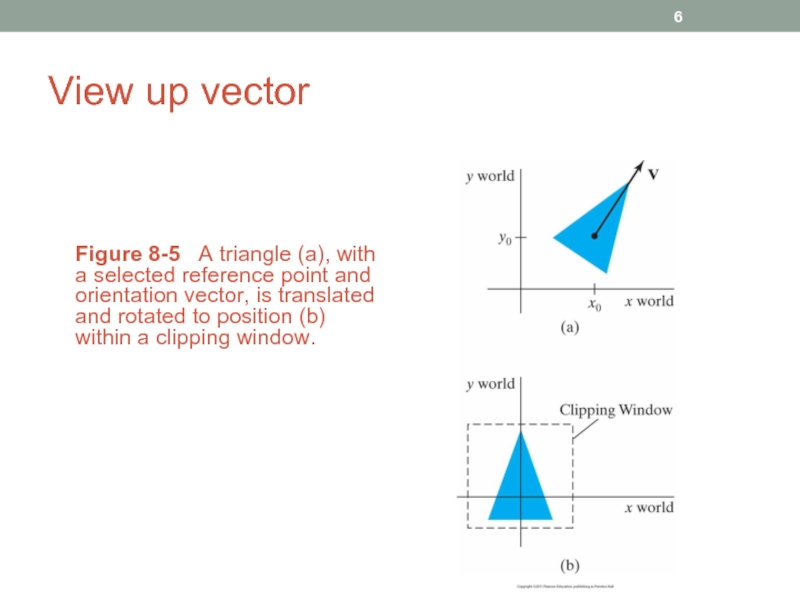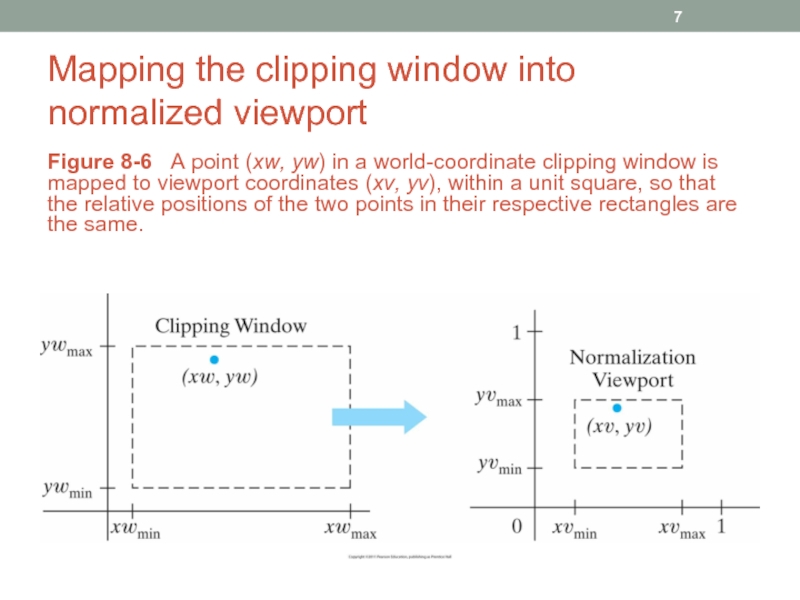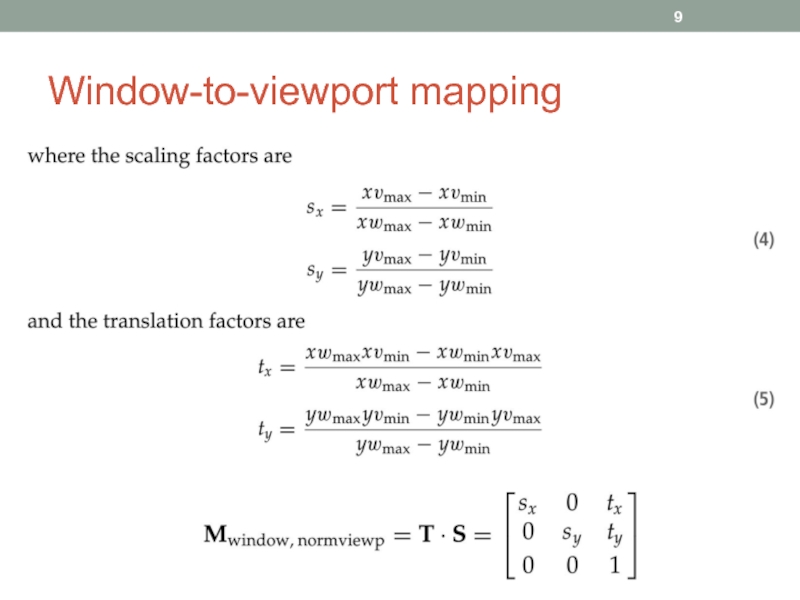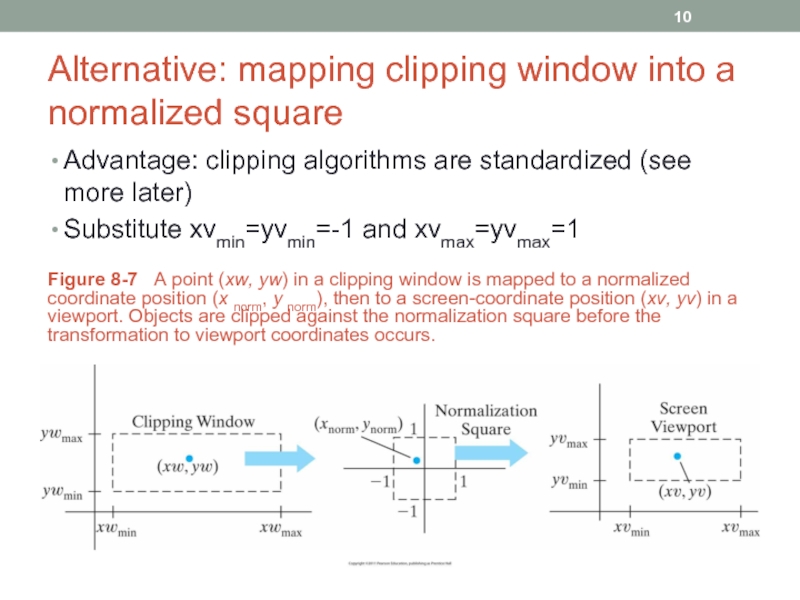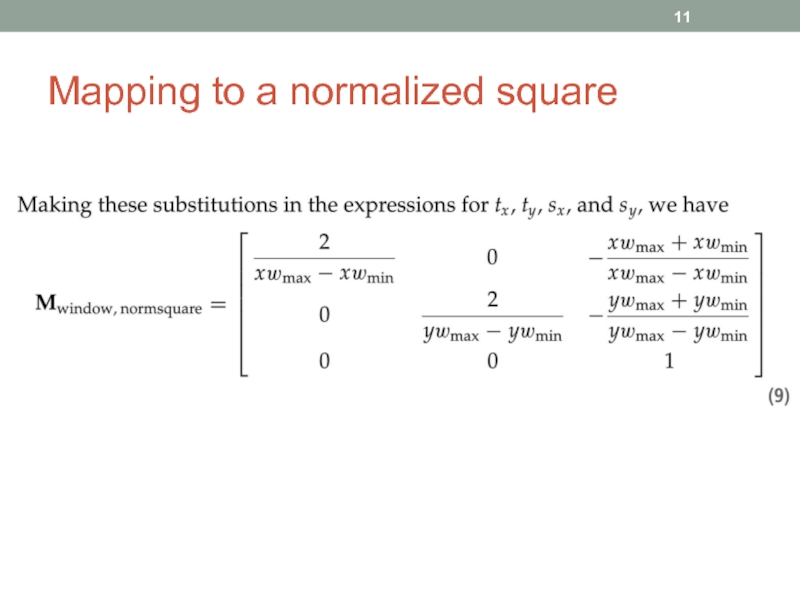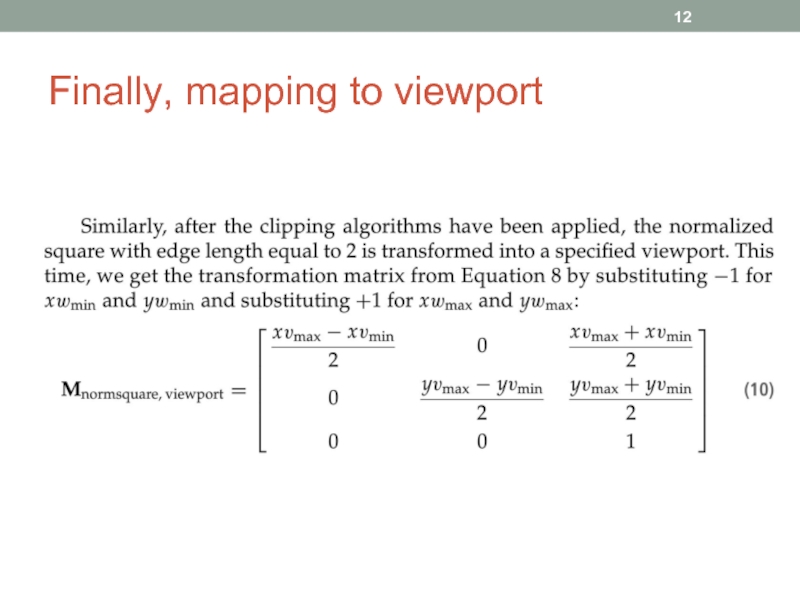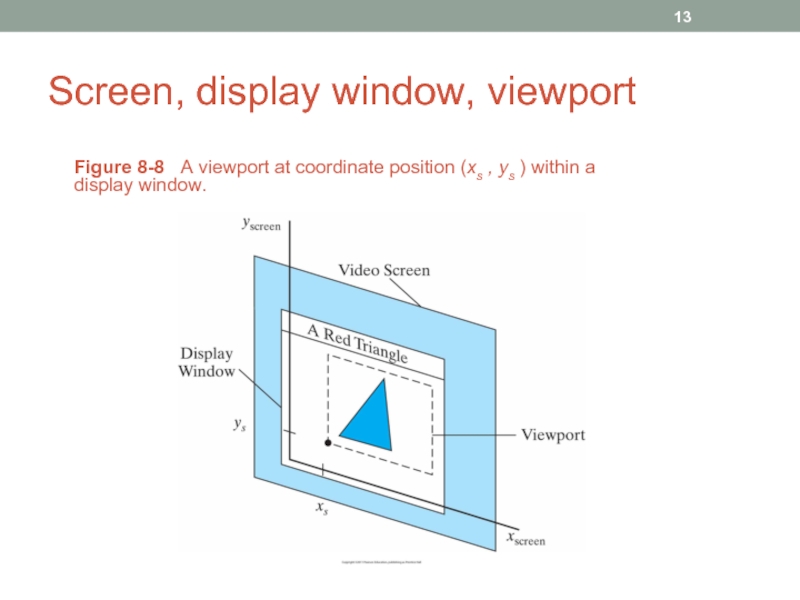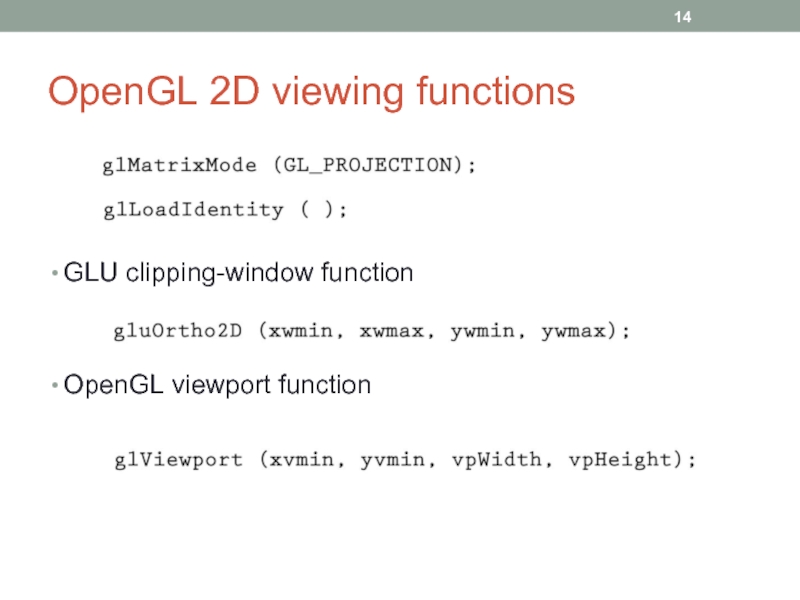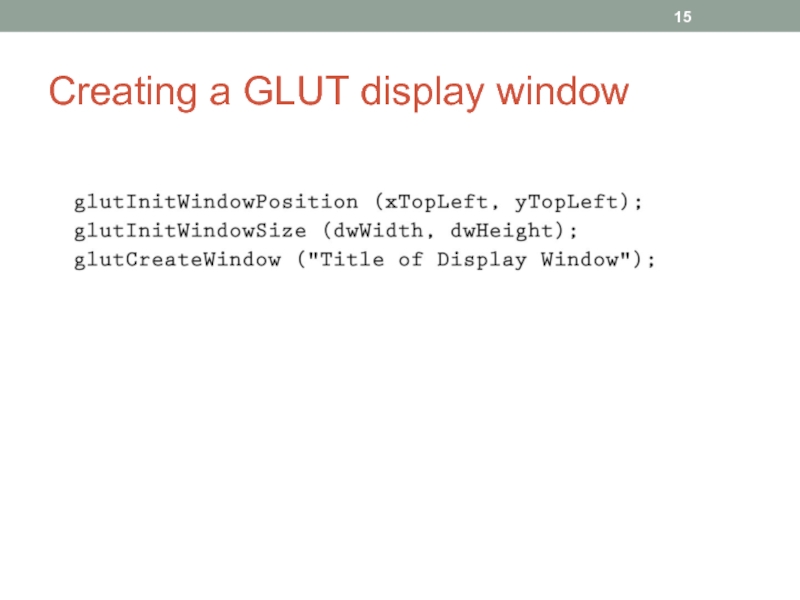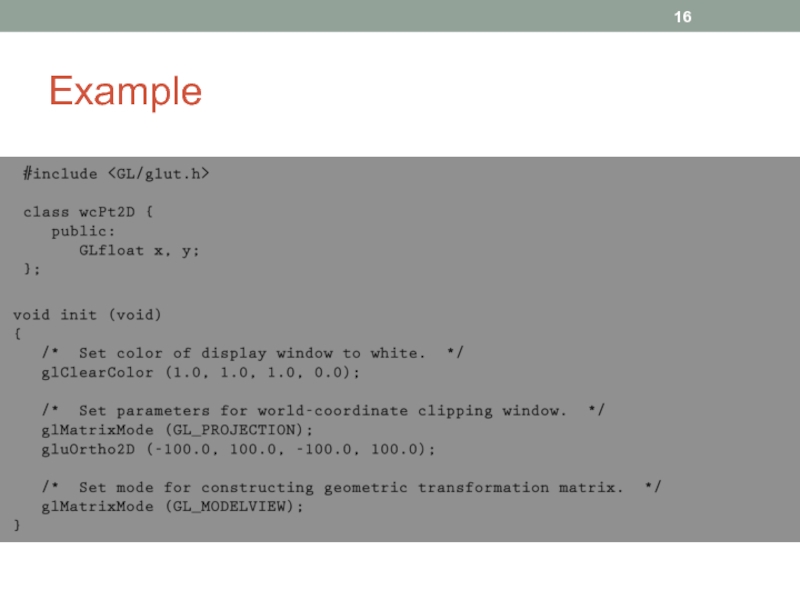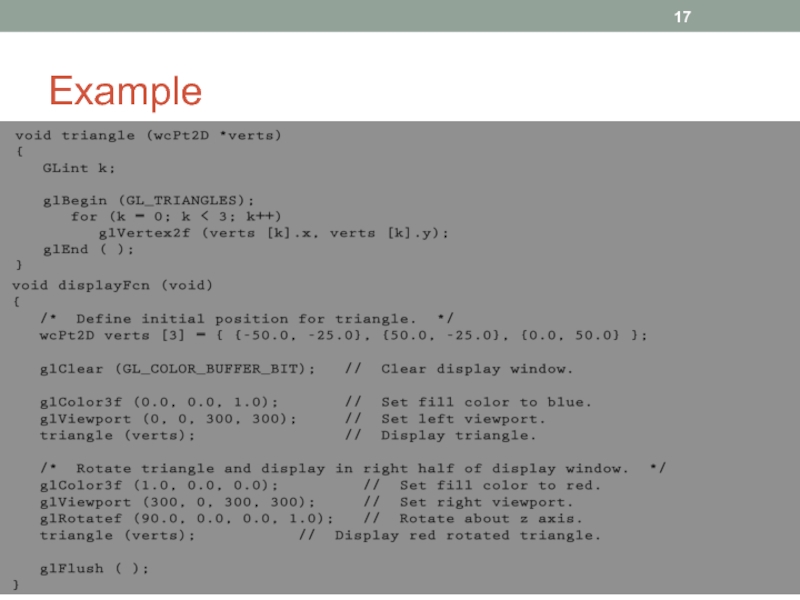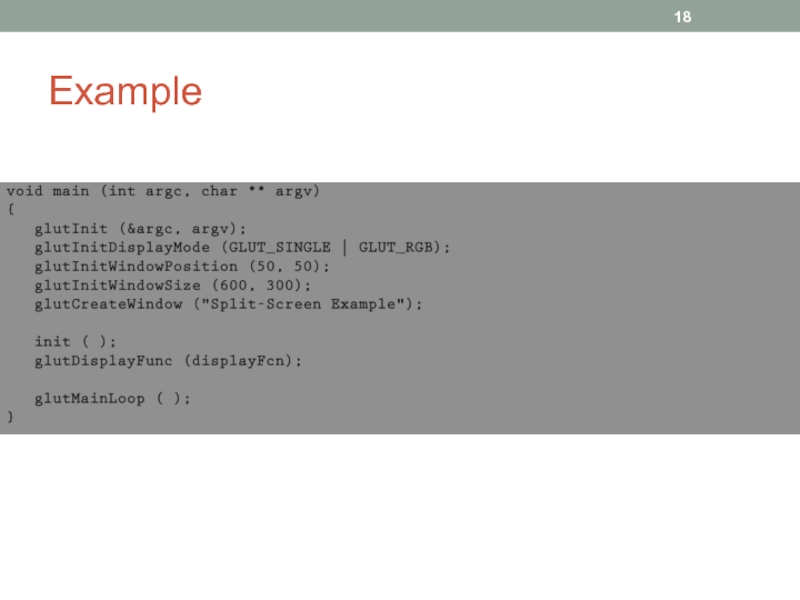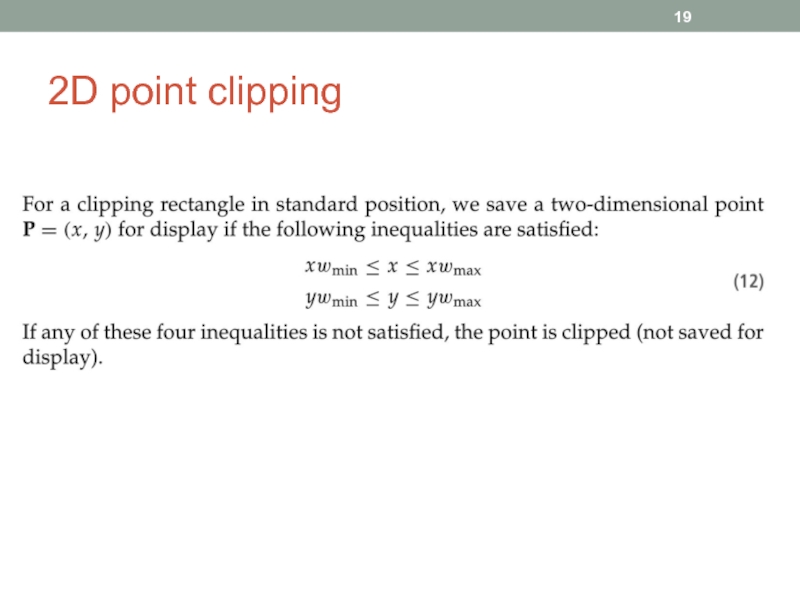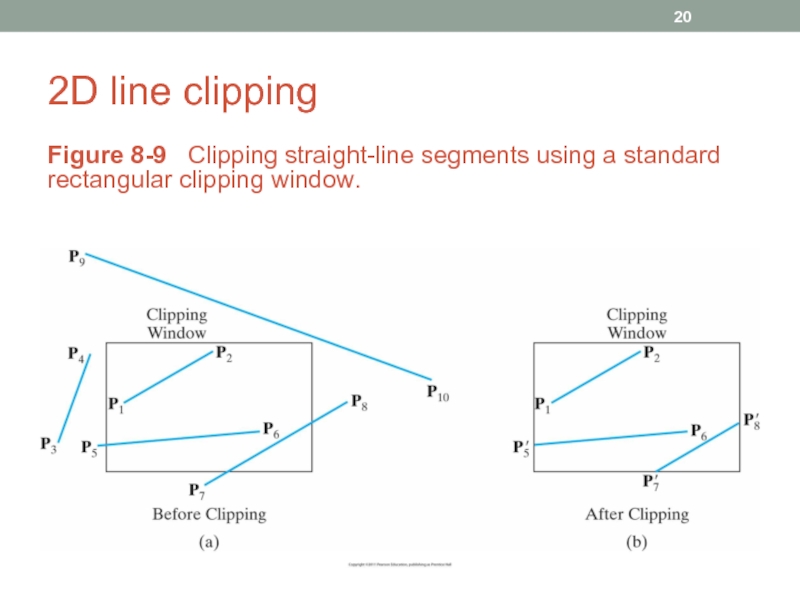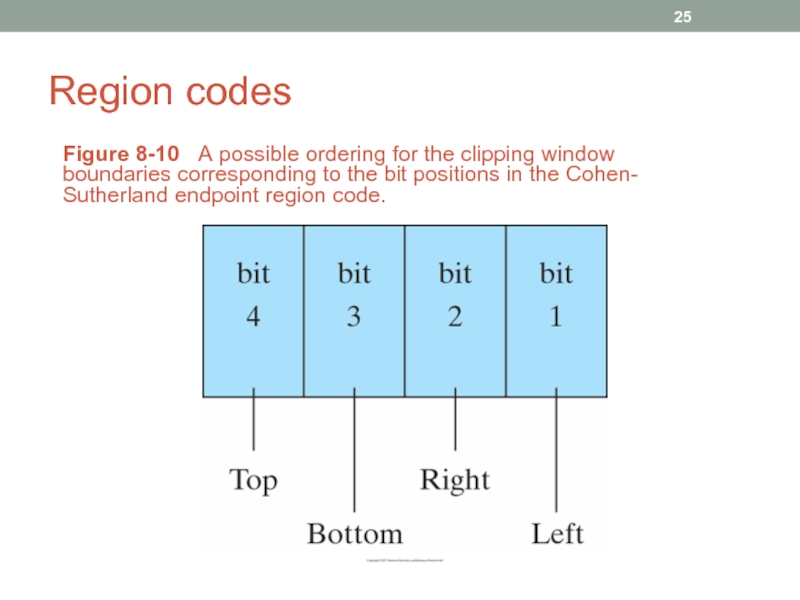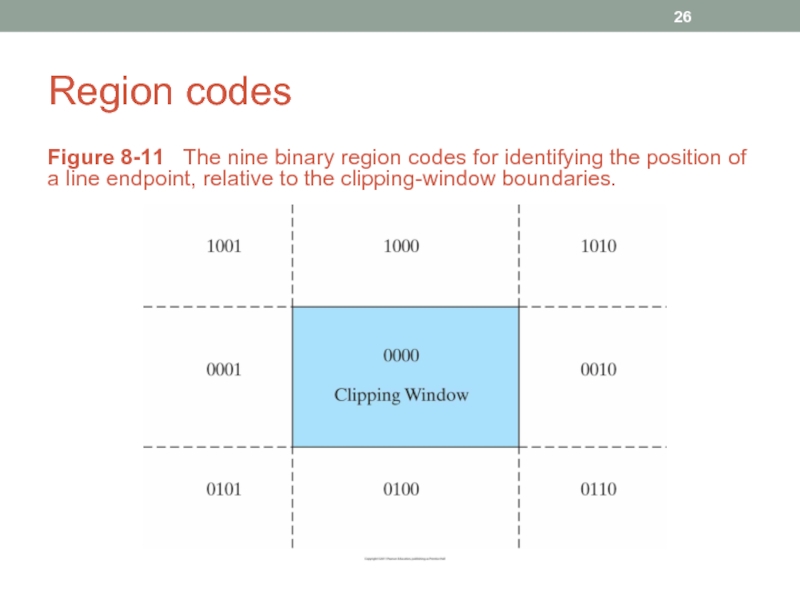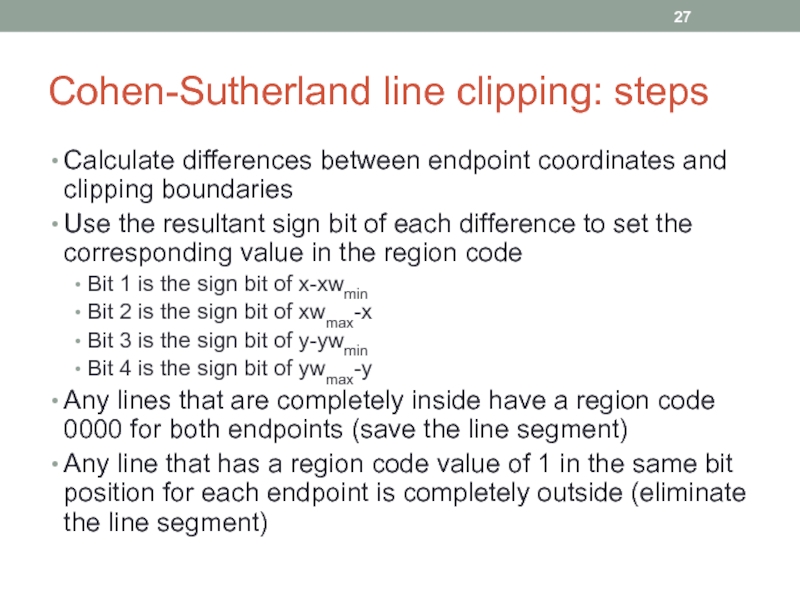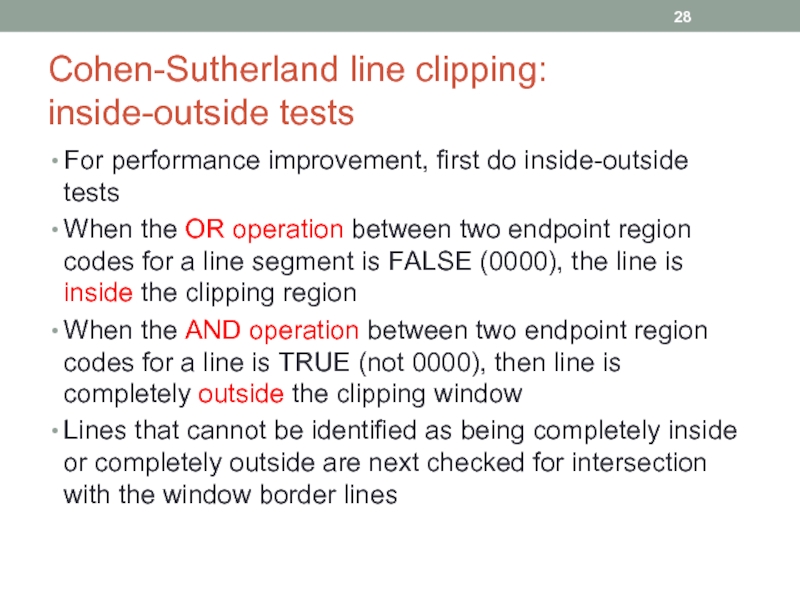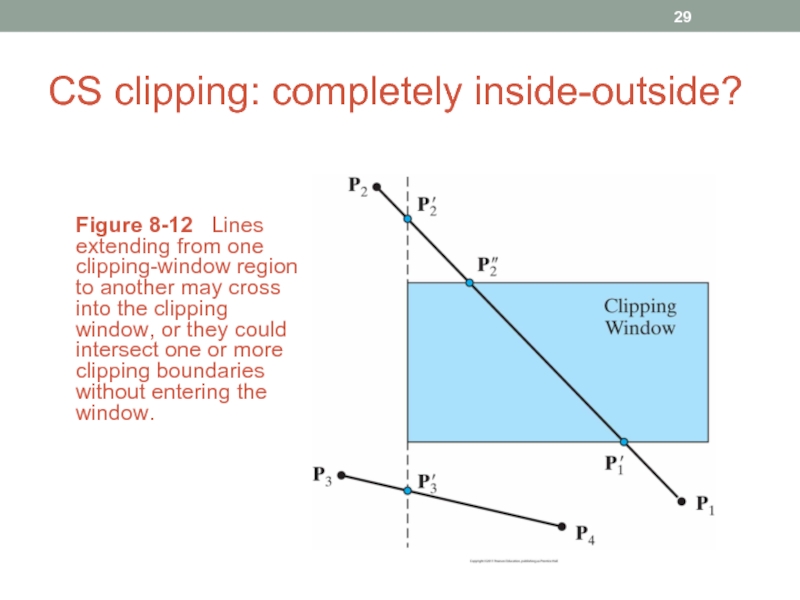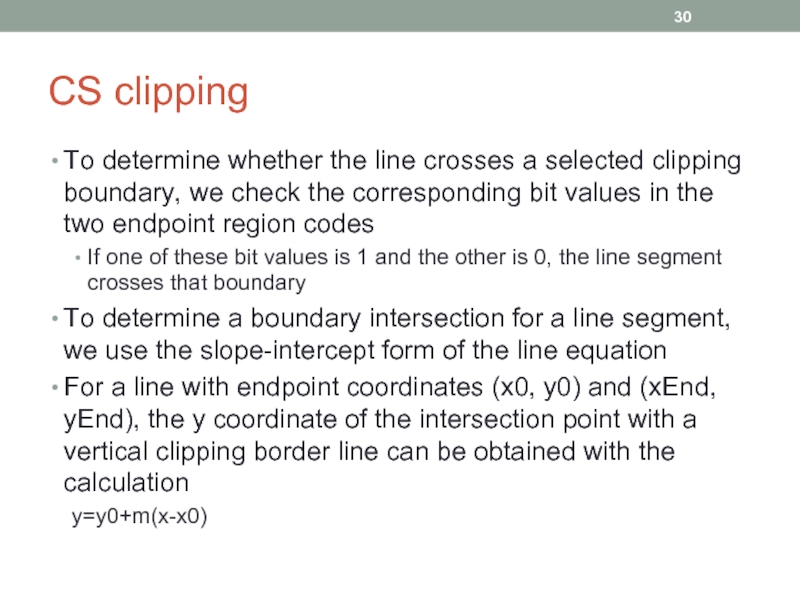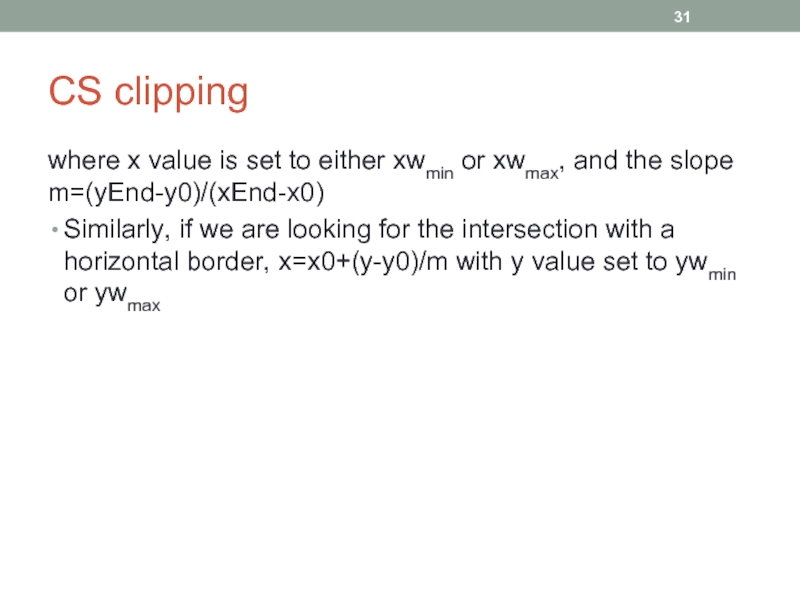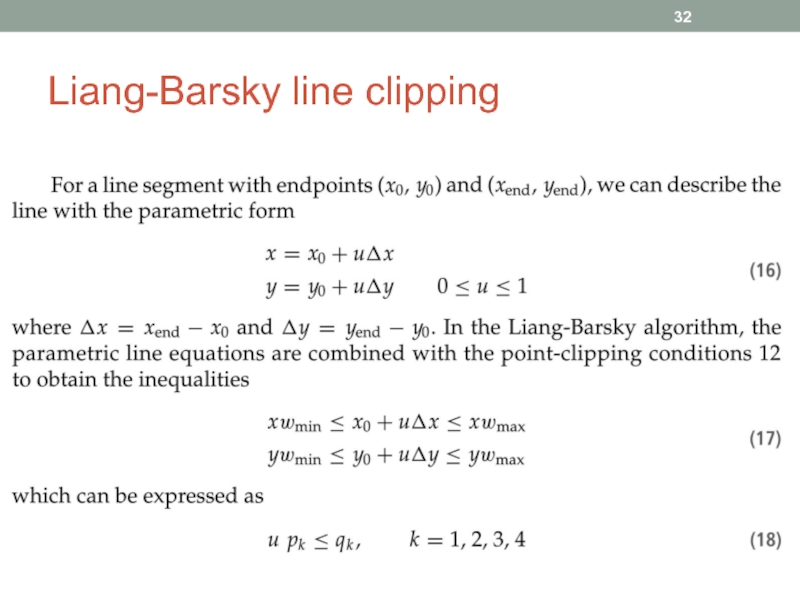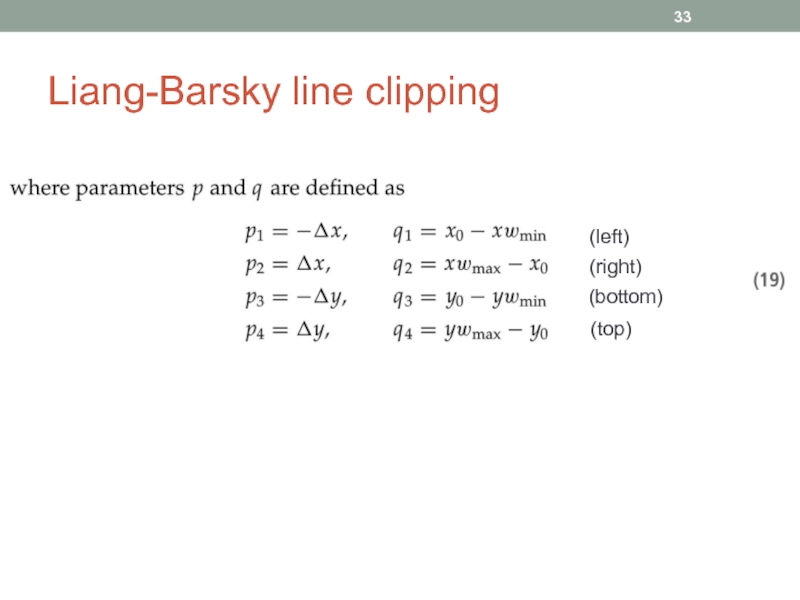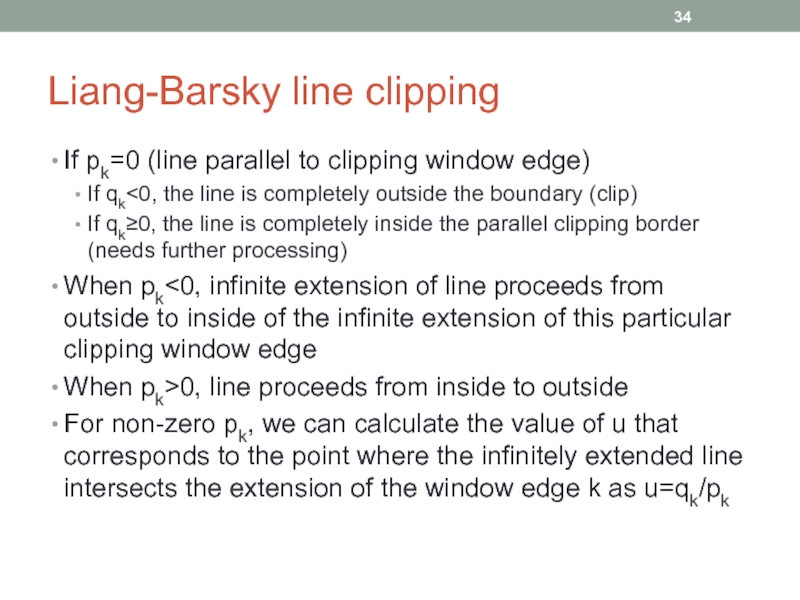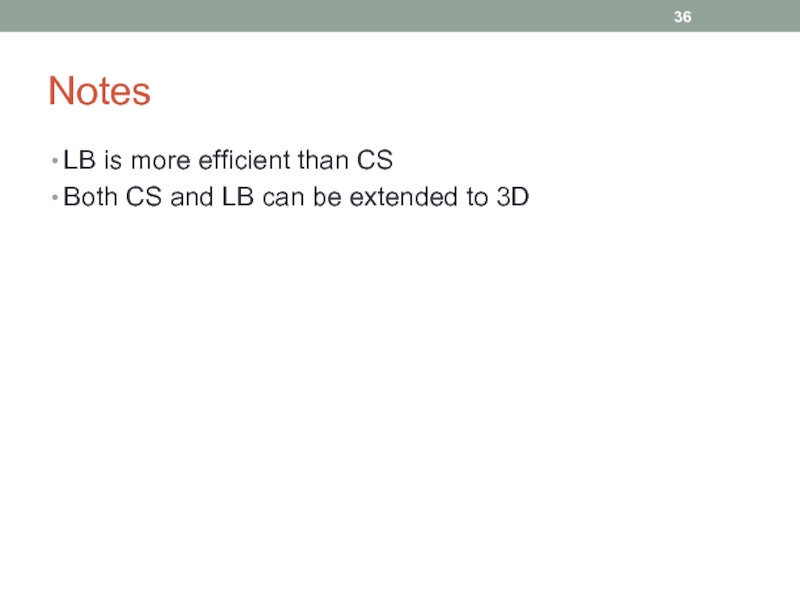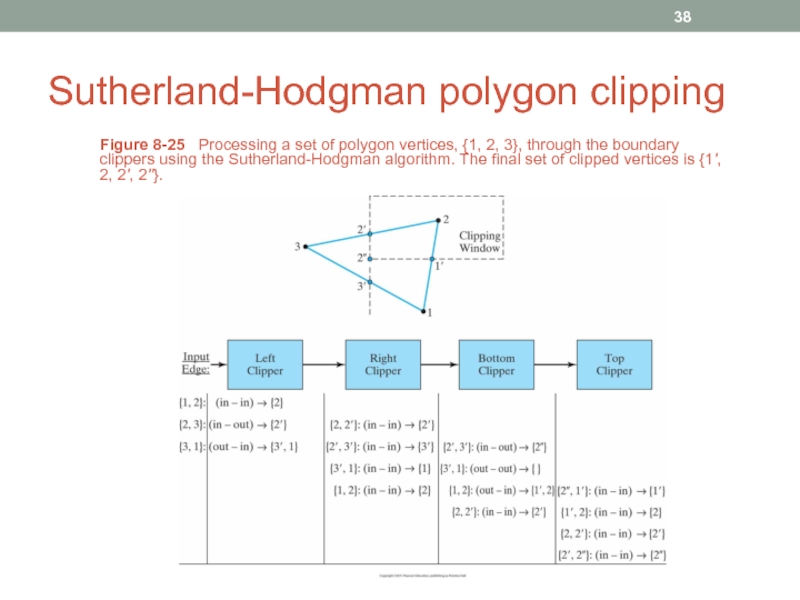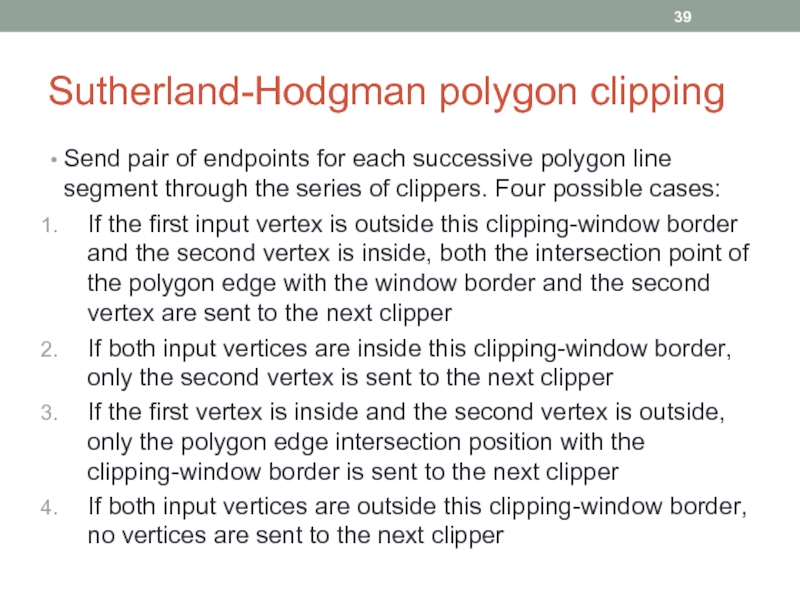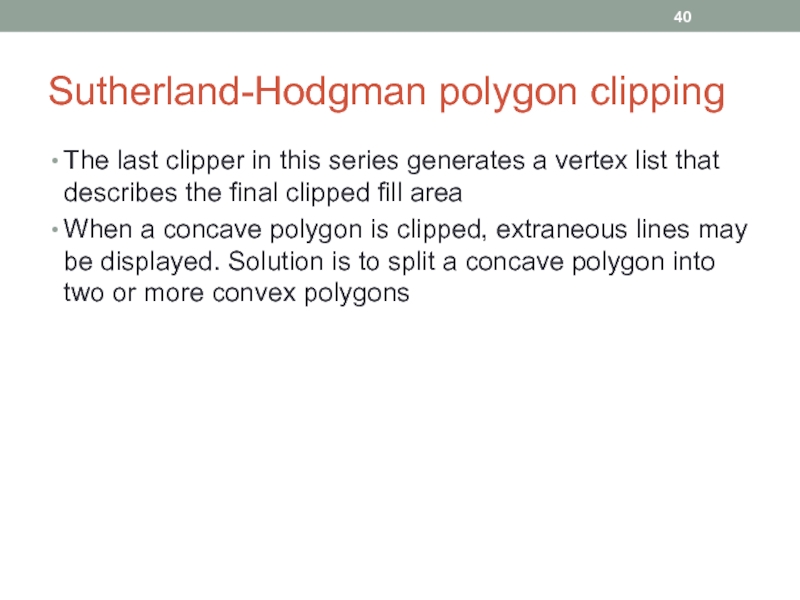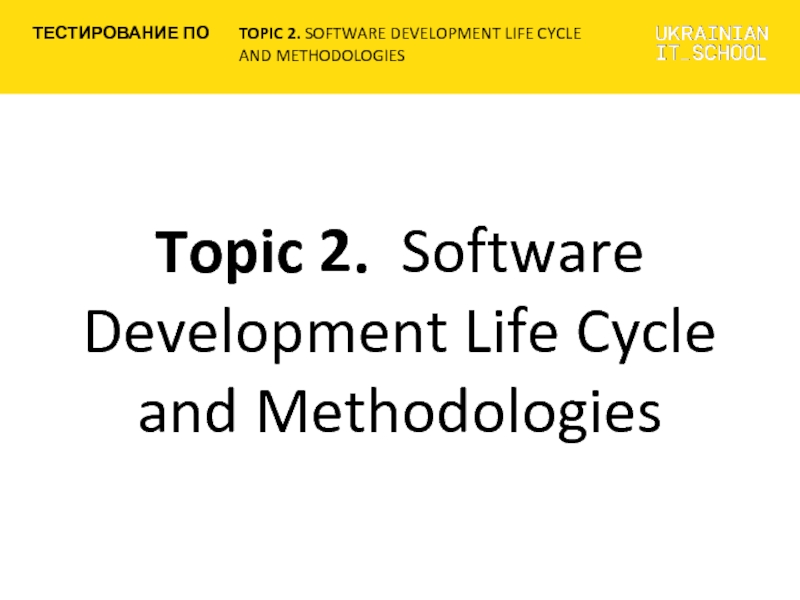- Главная
- Разное
- Дизайн
- Бизнес и предпринимательство
- Аналитика
- Образование
- Развлечения
- Красота и здоровье
- Финансы
- Государство
- Путешествия
- Спорт
- Недвижимость
- Армия
- Графика
- Культурология
- Еда и кулинария
- Лингвистика
- Английский язык
- Астрономия
- Алгебра
- Биология
- География
- Детские презентации
- Информатика
- История
- Литература
- Маркетинг
- Математика
- Медицина
- Менеджмент
- Музыка
- МХК
- Немецкий язык
- ОБЖ
- Обществознание
- Окружающий мир
- Педагогика
- Русский язык
- Технология
- Физика
- Философия
- Химия
- Шаблоны, картинки для презентаций
- Экология
- Экономика
- Юриспруденция
Cmpe 466 computer graphics. 2D viewing. (Chapter 8) презентация
Содержание
- 1. Cmpe 466 computer graphics. 2D viewing. (Chapter 8)
- 2. Window-to-viewport transformation Clipping window: section of 2D
- 3. Viewing pipeline Figure 8-2 Two-dimensional viewing-transformation
- 4. Viewing coordinates Figure 8-3 A rotated clipping window defined in viewing coordinates.
- 5. Viewing coordinates Figure 8-4 A viewing-coordinate
- 6. View up vector Figure 8-5 A
- 7. Mapping the clipping window into normalized viewport
- 8. Window-to-viewport mapping
- 9. Window-to-viewport mapping
- 10. Alternative: mapping clipping window into a normalized
- 11. Mapping to a normalized square
- 12. Finally, mapping to viewport
- 13. Screen, display window, viewport Figure 8-8
- 14. OpenGL 2D viewing functions GLU clipping-window function OpenGL viewport function
- 15. Creating a GLUT display window
- 16. Example
- 17. Example
- 18. Example
- 19. 2D point clipping
- 20. 2D line clipping Figure 8-9 Clipping straight-line segments using a standard rectangular clipping window.
- 21. 2D line clipping: basic approach Test if
- 22. Finding intersections and parametric equations
- 23. Parametric equations and clipping
- 24. Cohen-Sutherland line clipping Perform more tests before
- 25. Region codes Figure 8-10 A possible
- 26. Region codes Figure 8-11 The nine
- 27. Cohen-Sutherland line clipping: steps Calculate differences between
- 28. Cohen-Sutherland line clipping: inside-outside tests For performance
- 29. CS clipping: completely inside-outside? Figure 8-12
- 30. CS clipping To determine whether the line
- 31. CS clipping where x value is set
- 32. Liang-Barsky line clipping
- 33. Liang-Barsky line clipping (left) (right) (bottom) (top)
- 34. Liang-Barsky line clipping If pk=0 (line parallel to clipping window edge) If qk
- 35. LB algorithm If pk=0 and qku2, clip
- 36. Notes LB is more efficient than CS
- 37. Polygon Fill-Area Clipping Sutherland-Hodgman polygon clipping Figure
- 38. Sutherland-Hodgman polygon clipping Figure 8-25 Processing
- 39. Sutherland-Hodgman polygon clipping Send pair of endpoints
- 40. Sutherland-Hodgman polygon clipping The last clipper in
- 41. Concave polygons Figure 8-26 Clipping the
Слайд 1CMPE 466
COMPUTER GRAPHICS
Chapter 8
2D Viewing
Instructor: D. Arifler
Material based on
- Computer Graphics
- Fundamentals of Computer Graphics, Third Edition by by Peter Shirley and Steve Marschner
- Computer Graphics by F. S. Hill
Слайд 2Window-to-viewport transformation
Clipping window: section of 2D scene selected for display
Viewport: window
Figure 8-1 A clipping window and associated viewport, specified as rectangles aligned with the coordinate axes.
Слайд 3Viewing pipeline
Figure 8-2 Two-dimensional viewing-transformation pipeline.
Normalization makes viewing device independent
Clipping
Слайд 5Viewing coordinates
Figure 8-4 A viewing-coordinate frame is moved into coincidence
Слайд 6View up vector
Figure 8-5 A triangle (a), with a selected
Слайд 7Mapping the clipping window into normalized viewport
Figure 8-6 A point
Слайд 10Alternative: mapping clipping window into a normalized square
Advantage: clipping algorithms are
Substitute xvmin=yvmin=-1 and xvmax=yvmax=1
Figure 8-7 A point (xw, yw) in a clipping window is mapped to a normalized coordinate position (x norm, y norm), then to a screen-coordinate position (xv, yv) in a viewport. Objects are clipped against the normalization square before the transformation to viewport coordinates occurs.
Слайд 13Screen, display window, viewport
Figure 8-8 A viewport at coordinate position
Слайд 202D line clipping
Figure 8-9 Clipping straight-line segments using a standard
Слайд 212D line clipping: basic approach
Test if line is completely inside or
When both endpoints are inside all four clipping boundaries, the line is completely inside the window
Testing of outside is more difficult: When both endpoints are outside any one of four boundaries, line is completely outside
If both tests fail, line segment intersects at least one clipping boundary and it may or may not cross into the interior of the clipping window
Слайд 24Cohen-Sutherland line clipping
Perform more tests before finding intersections
Every line endpoint is
E.g., suppose that the coordinate of the endpoint is (x, y). Bit 1 is set to 1 if x
Слайд 25Region codes
Figure 8-10 A possible ordering for the clipping window
Слайд 26Region codes
Figure 8-11 The nine binary region codes for identifying
Слайд 27Cohen-Sutherland line clipping: steps
Calculate differences between endpoint coordinates and clipping boundaries
Use
Bit 1 is the sign bit of x-xwmin
Bit 2 is the sign bit of xwmax-x
Bit 3 is the sign bit of y-ywmin
Bit 4 is the sign bit of ywmax-y
Any lines that are completely inside have a region code 0000 for both endpoints (save the line segment)
Any line that has a region code value of 1 in the same bit position for each endpoint is completely outside (eliminate the line segment)
Слайд 28Cohen-Sutherland line clipping: inside-outside tests
For performance improvement, first do inside-outside tests
When
When the AND operation between two endpoint region codes for a line is TRUE (not 0000), then line is completely outside the clipping window
Lines that cannot be identified as being completely inside or completely outside are next checked for intersection with the window border lines
Слайд 29CS clipping: completely inside-outside?
Figure 8-12 Lines extending from one clipping-window
Слайд 30CS clipping
To determine whether the line crosses a selected clipping boundary,
If one of these bit values is 1 and the other is 0, the line segment crosses that boundary
To determine a boundary intersection for a line segment, we use the slope-intercept form of the line equation
For a line with endpoint coordinates (x0, y0) and (xEnd, yEnd), the y coordinate of the intersection point with a vertical clipping border line can be obtained with the calculation
y=y0+m(x-x0)
Слайд 31CS clipping
where x value is set to either xwmin or xwmax,
Similarly, if we are looking for the intersection with a horizontal border, x=x0+(y-y0)/m with y value set to ywmin or ywmax
Слайд 34Liang-Barsky line clipping
If pk=0 (line parallel to clipping window edge)
If qk
If qk≥0, the line is completely inside the parallel clipping border (needs further processing)
When pk<0, infinite extension of line proceeds from outside to inside of the infinite extension of this particular clipping window edge
When pk>0, line proceeds from inside to outside
For non-zero pk, we can calculate the value of u that corresponds to the point where the infinitely extended line intersects the extension of the window edge k as u=qk/pk
Слайд 35LB algorithm
If pk=0 and qk
For all k such that pk<0 (outside-inside), calculate rk=qk/pk. Let u1 be the max of {0, rk}
For all k such that pk>0 (inside-outside), calculate rk=qk/pk. Let u2 be the min of {rk, 1}
If u1>u2, clip the line since it is completely outside. Otherwise, use u1 and u2 to calculate the endpoints of the clipped line
Example: (u1
u2=min{rtop, rright,1}
rleft
rbottom
rtop
rright
u=1
u=0
Слайд 37Polygon Fill-Area Clipping
Sutherland-Hodgman polygon clipping
Figure 8-24 The four possible outputs
Слайд 38Sutherland-Hodgman polygon clipping
Figure 8-25 Processing a set of polygon vertices,
Слайд 39Sutherland-Hodgman polygon clipping
Send pair of endpoints for each successive polygon line
If the first input vertex is outside this clipping-window border and the second vertex is inside, both the intersection point of the polygon edge with the window border and the second vertex are sent to the next clipper
If both input vertices are inside this clipping-window border, only the second vertex is sent to the next clipper
If the first vertex is inside and the second vertex is outside, only the polygon edge intersection position with the clipping-window border is sent to the next clipper
If both input vertices are outside this clipping-window border, no vertices are sent to the next clipper
Слайд 40Sutherland-Hodgman polygon clipping
The last clipper in this series generates a vertex
When a concave polygon is clipped, extraneous lines may be displayed. Solution is to split a concave polygon into two or more convex polygons
